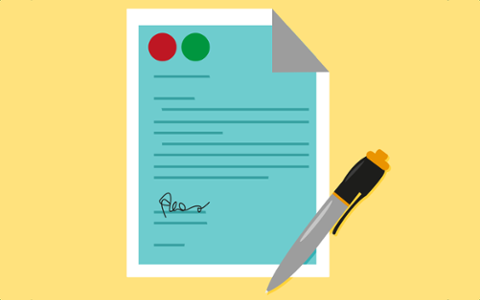It’s tempting to view cover letters as an unnecessary pain. Why do you have to spend time writing one when your prospective employer can already review your résumé, application, repositories, and other materials? But cover letters are a great opportunity to show a company what makes you truly unique; it’s your chance to create a “Narrative of You.”
If you’re competing for a particularly in-demand role, that uniqueness can mean the difference between a rejection and actually landing the job. Lots of candidates have the necessary skills to fulfill a particular set of job duties; but only one candidate will show that they have just the right combination of drive, motivation, and background to truly fit into the company’s plans.
With all that in mind, here are five things to avoid when writing your next cover letter:
Not Including Links/Repos
Way back in the day, hiring managers and recruiters only looked at a paper version of your cover letter. Today, though, they’re most likely flicking through your materials on a screen. In other words, they’re fully capable of clicking on any links you include in your cover letter and résumé, and that means you can include links to projects, Github repositories, and any sites that convey your best work.
In fact, it would almost be malpractice to not include some links, especially if you’re a developer or engineer who’s worked on some notable projects. Even if you’re a new graduate, chances are pretty good there’s a website or repository somewhere that has something of yours on it. And if your projects thus far have all been group efforts, that’s okay, too; employers are very interested in seeing how you work as part of a team, and anything that hints at your collaborative abilities is only to the good.
Drifting
Look at your cover letter as a very short story that puts you in the best possible light. It explains, succinctly, why you’re interested in the job and what you can contribute to the company. And because you’re restricted to one page, you don’t have a whole lot of room to make your points. In light of all that, keep things as streamlined as possible.
Many candidates make the mistake of using their cover letter to trace out their entire career, while devoting precious little space to explaining why the skills and experience earned over that career will allow them to succeed in a particular role. Since the hiring manager and/or recruiter will only spend a minute or two reading through your materials, make sure you get to the point immediately with a solid first sentence, something along the lines of:
“I’m interested in the position of data analyst because I want to use my skills in sorting through unstructured datasets to help [company] find valuable insights into [whatever huge, world-threatening problem the company tackles].”
From there, the rest of your paragraphs should focus on those specific skills and experiences that will allow you to fulfill the promise of that first sentence. Don’t go into pointless digressions; keep laser-focused on your target.
Misspellings
We’re repeated this advice many times before, but it’s well worth stating again: typos will murder your chances of landing the job. You might not think that employers care too much about your ability to spell when you’re applying for a developer role (for instance), but grammatical and spelling snafus show that you didn’t take the time to proofread your document—and that suggests, in turn, a certain level of sloppiness that no company will tolerate.
When in doubt, have a friend read through your documents before you send, just so you have a pair of fresh eyes to spot any errors you’d otherwise skim over.
Adhering Too Closely to a Template
We get it: You have no time. It’s tempting (really tempting!) to use one of the handy templates for cover letters that you find online, or as part of a word-processing program. But while it’s certainly helpful to look at how those templates are structured, slavishly following one is a recipe for disaster, because your cover letter will end up looking like… it came directly from a widely available template.
That’s not to say you shouldn’tobey what’s viewed as the “common” format. You have:
Your salutation:Never, ever put in a generic “Dear Sir/Madam” or “To Whom It May Concern”; find a distinct contact person.
Your First Paragraph: That aforementioned first sentence that boils down your intent and motivation, followed by another sentence or two that diagrams how your strength and experience makes you a fit for the role.
Your Second Paragraph: Plunge more deeply into what you provide your employer, in terms of skills. Touch on previous projects and how they inform how you’ll work on the employer’s challenges. This is also a good opportunity to show how well you know the employer’s operations; show off your research by (briefly) discussing something like their products and strategy.
Your Third and Fourth Paragraphs: Here’s where you can expand a little bit more on the points touched in the second paragraph, but keep in mind that brevity is always appreciated.
Closing/Signature: Remember, a formal ending is always best. Suggest some next steps, such as a call, and remember to close with something like “Yours,” or “Sincerely.”
Within that loose structure, though, you have some room to maneuver. Many templates offer a sentence-by-sentence breakdown of an “ideal” cover letter, and you should try to stay away from perfectly mimicking those point-for-point.
Not Aligning Cover Letter Details with Your Résumé
Make absolutely sure that everything (skills, dates, jobs) on your cover letter aligns with what’s on your résumé, which is always the thing that employers look at after (or before) they’ve reviewed your cover letter. If there any discrepancies between the two documents, you could have a very bad problem.



